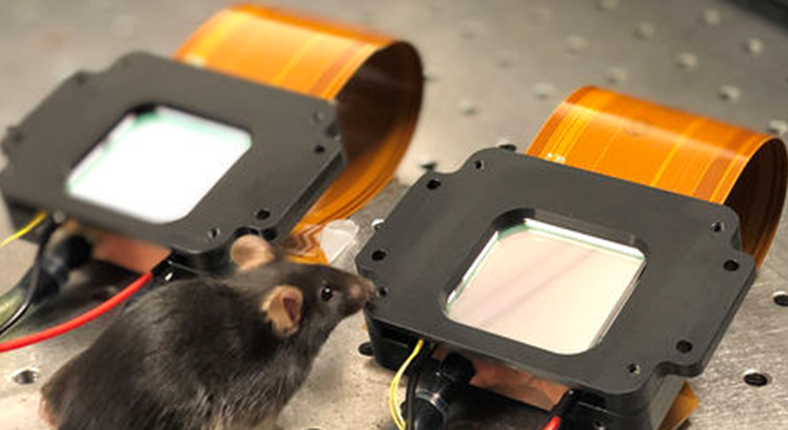Can Hallucination Be Triggered Experimentally? Scientists Say Yes

Image Courtesy: Science Magazine.
Hallucination is the state where someone sees or feels about something which is not in place. Psychologists and psychiatrists have different take on this. They would say it is an aberrant state of mind and the brain has gone out of its normal functioning. But for neuroscientists, there is another perspective to dwell on. A neuroscientist would ask what do the neurons do when one hallucinates.
For quite a long, neuroscientists have been thriving to find out how many neurons are necessary to elicit a particular memory or a particular sensation or a movement. Conventional techniques barred neuroscientists from deciphering exact location or exact numbers of neurons involved. Thanks to the development of optogenetics—a technology by which neurons can be stimulate with light, precisely exciting particular cells in the visual cortex of a mouse.
Now two teams have made use of optogenetics in a mice experiment and reported that they could elicit hallucinations in the mice. They showed that triggering just few neurons could elicit the same brain activity as showing the animals a visual stimuli and also could make them react as if they had seen that stimuli.
Karl Deisseroth, a neuroscientist and psychiatrist at Stanford University in Palo Alto, California, who led one of the new studies, published online this week in Science said—“We don't know how many cells it might take to trigger a more elaborate thought, sensory experience, or emotion in a person, but it's likely to be a surprisingly small number, given what we're seeing in the mouse."
Deisseroth also says that the observations might also help in understanding disordered states of the brain like that of hallucinations, unwanted thoughts and harmful actions. Also, individual neuron tracking could someday lead to treating symptoms of these kinds.
The other study that reported similar findings is the one led by Rafael Yuste and published in Cell.
The technique of optogenetics involves introducing a gene for light sensitive proteins, for example, the opsins into neurons. Both the groups targeted predefined sets of neurons by laser beam with the help of a device called spatial light modulator. Along with an opsin gene, they injected another gene that can produce a protein molecule, which fluoresces when neurons fire. This allowed them to discern what cells were active.
They developed a special behavioral experiment. They showed the mice a pattern of parallel lines on a screen and trained the mice to lick water when the lines were in two orientations —either horizontal or vertical. They first identified the neurons that were active in recognising the patterns of lines.
Yuste’s group found that stimulating as few as two well connected neurons that were involved in the pattern recognition of the lines, could make the mice lick the water bowl. At this point of time, the visual patterns of the lines were not present on the screen. This resembles hallucinations.
Deisseroth’s group activated larger sets of neurons. They also found similar sort of results. These results support that ensembles of neurons, not individuals, form the basis of cognition of any kind, whether it is memory, or vision or abstract thinking. The question is about the precise numbers of neurons involved in a cognitive process. These new findings hint towards the possibilities of having some answers of these long stranding questions of neuroscience.
Nevertheless, it is too early to declare that details of neuronal functioning could be deciphered through optogenetics and through such kinds of experiments. However, it is certain that these experiments could bring in new paradigm in neuroscience research.
Deiseroth and Yuste labs now plan to use their paradigm of research to find out neurons involved in more complex behavior, like that of brain diseases.
Get the latest reports & analysis with people's perspective on Protests, movements & deep analytical videos, discussions of the current affairs in your Telegram app. Subscribe to NewsClick's Telegram channel & get Real-Time updates on stories, as they get published on our website.















